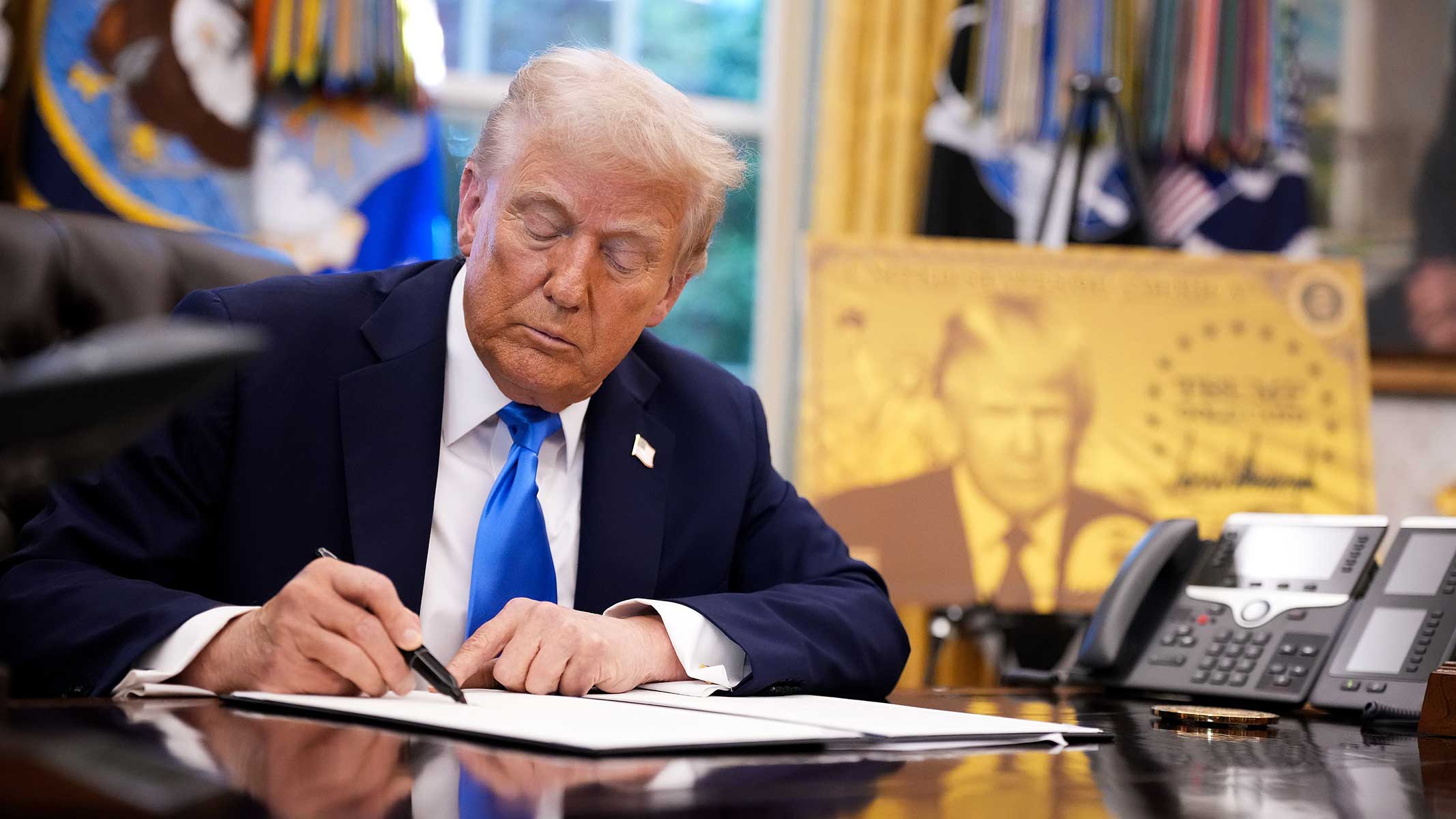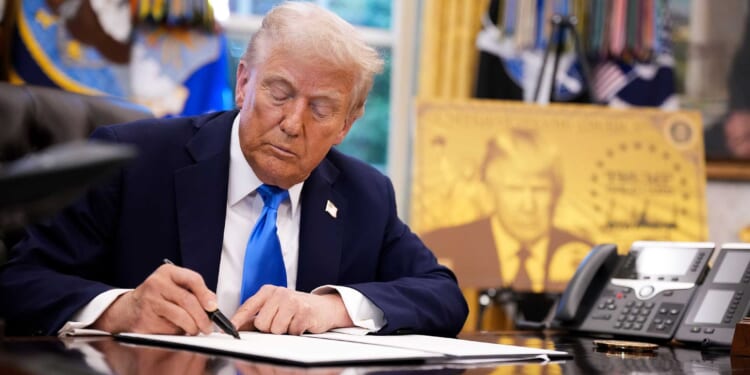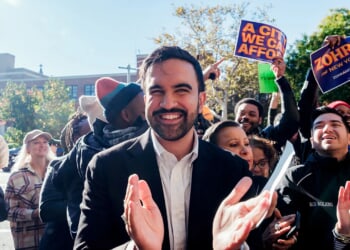
On Friday afternoon, President Donald Trump signed a proclamation prohibiting the entry and approval of skills-based H-1B visa holders unless their employer pays a $100,000-per-visa fee. If allowed to stand, this move would diminish the high-skilled immigration pipeline that has allowed the American medical, technology, and higher-education sectors to flourish. It would ignite a rush to move labor offshore and leave American workers worse off than before.
The administration justified its action by arguing that the H‑1B visa has been “exploited” by employers hiring lower-paid foreign workers, allegedly undercutting U.S. wages. While its recent steps aim to protect U.S. workers’ salaries, in reality, they will cripple the most important sectors of the U.S. economy and make Americans poorer.
The H-1B visa is granted to immigrants for up to six years to work in an occupation that requires a college degree and for a sponsoring company, from which they can switch to another if approved later. These workers can be sponsored for permanent residency and eventually become citizens. Many do so, using their H-1B visa as a way to work while they wait for permanent residency, especially given the growing, years-long bureaucratic backlog of this process.
The total number of visas for for-profit companies is limited to 85,000 annually. Nonprofits, research organizations including hospitals, and universities are exempted from this numerical cap. In total, about 130,000 new petitions are approved each year.
The technology sector will undoubtedly be among those most affected by the new order. According to U.S. Citizenship and Immigration Services, 54 percent of new H-1B visas in 2024 went to computer-related occupations. Amazon alone had over 10,000 H‑1B approvals including new and continuing visas for 2025; Microsoft and Meta each had over 5,000. Other big tech firms like Apple, Google, and IBM likewise sponsor thousands of H‑1B workers to work on cutting-edge projects.
But other industries will also feel the pain. Ten percent of new H-1B visas go to the education sector, where they are used mainly to sponsor college professors to train American students in STEM topics and to STEM researchers. Over 8,000 H-1B visas per year are for medical professionals, including physicians who work in underserved regions and researchers working on curing diseases.
It is smaller entities—not Amazon, Google, or Apple—that will be most burdened by the new rules. Universities, nonprofits, and hospitals will be hard-pressed to pay an extra $100,000 to sponsor a critical specialist, to the detriment of research output or patient care. Unlike tech giants, small startups and smaller firms cannot possibly absorb a six-figure expense just to bring one software developer or biomedical researcher on board.
Proponents of the $100,000 fee argue that forgone foreign workers will just be replaced by Americans. This is a Malthusian fantasy.
Legal sponsorship already costs over $10,000 per person and the median H-1B worker is already paid $120,000 annually. If employers could avoid these costs to hire Americans, they would. Adding an additional $100,000 expense will instead push employers to offshore their technology and research work and forgo the work that must be done in the country, not hire Americans. If firms don’t hire foreign workers, the same number of jobs won’t be done by Americans—the number of jobs will simply fall.
In fact, losing H-1B employees could hurt American workers in the long run. While some evidence suggests that H-1B visas do affect U.S. workers negatively in the firms where they are hired, other research suggests that each additional H‑1B tends to create jobs for Americans, by boosting growth and productivity in other sectors. Each visa adds an estimated 1.8 jobs, on average, in part thanks to immigrant entrepreneurship. This is what standard economic theory predicts: if you add more physicians and engineers to the economy, you will lower the price for their services, with the additional benefit of more innovation that makes us all more productive and better off.
Entrepreneurs have long been one of the fruits of high-skill immigration, and here the $100,000 fee introduces a great problem. Does anyone think that a firm would have paid $100,000 to sponsor Elon Musk for an H-1B visa when he was a college dropout, on top of his compensation? What about Melania Trump, here first as a supermodel? Yes, even supermodels come to America on H-1B visas.
But perhaps the greatest disadvantage to the United States from this fee is counterintuitive: the $100,000 visa fee may actually cost the federal government billions in revenue. In aggregate, H‑1B workers pay about $85 billion in federal income taxes every year. In addition, they contribute over $27 billion each year to Social Security and Medicare via payroll taxes. As a result, each additional H‑1B worker ultimately reduces the U.S. budget deficit by over $800,000. If cap-exempt H-1B visa issuance falls even moderately, the fee will increase the budget deficit.
None of this is to argue that the H-1B program doesn’t have problems. Critics are right to be concerned that too many H‑1B visas are going to middle-income jobs instead of the “best and brightest.”
But the solution is to allocate H‑1B visas by wage rather than by lottery. Instead of handing out the visas at random, as it currently does, the federal government could auction them off. The administration’s fee is likely to be much higher than anyone is willing to pay.
The Trump administration has just released a proposed rule to do this, giving more chances to immigrants with a higher “prevailing wage.” The problem with the rule is that it is based on the wage relative to the worker’s described occupation, so unethical employers will game the system by reclassifying their workers’ occupations. Instead, the administration should pursue a pure wage-based selection model, in which the median salary for new H-1B visas would rise to $137,000. Shifting to a wage-based allocation (without even increasing the visa numbers) would boost U.S. GDP by $61 billion–$114 billion per year.
The administration’s attack on the H-1B is particularly troublesome given that other components of our immigration system are far less merit-oriented. The Diversity Immigrant Visa program gives out 55,000 green cards each year. The system is worse than a lottery because recipients must be born in a specific country to qualify, and applicants need only have a high school diploma and no U.S. job offer. It is DEI on steroids for immigration.
Shouldn’t a conservative immigration system welcome immigrants who earn a good living without help from any government program, follow the laws, speak English, and assimilate into their communities? That is exactly what H-1B visa holders look like. If they aren’t good immigrants, who can be?
The administration’s misguided immigration measure is economically and strategically unsound. America’s future competitiveness depends on welcoming top talent, not tariffing it out. As history shows, the next “big thing” could very well come through our doors via an H‑1B visa—if we keep those doors open.
Photo by Andrew Harnik/Getty Images

















